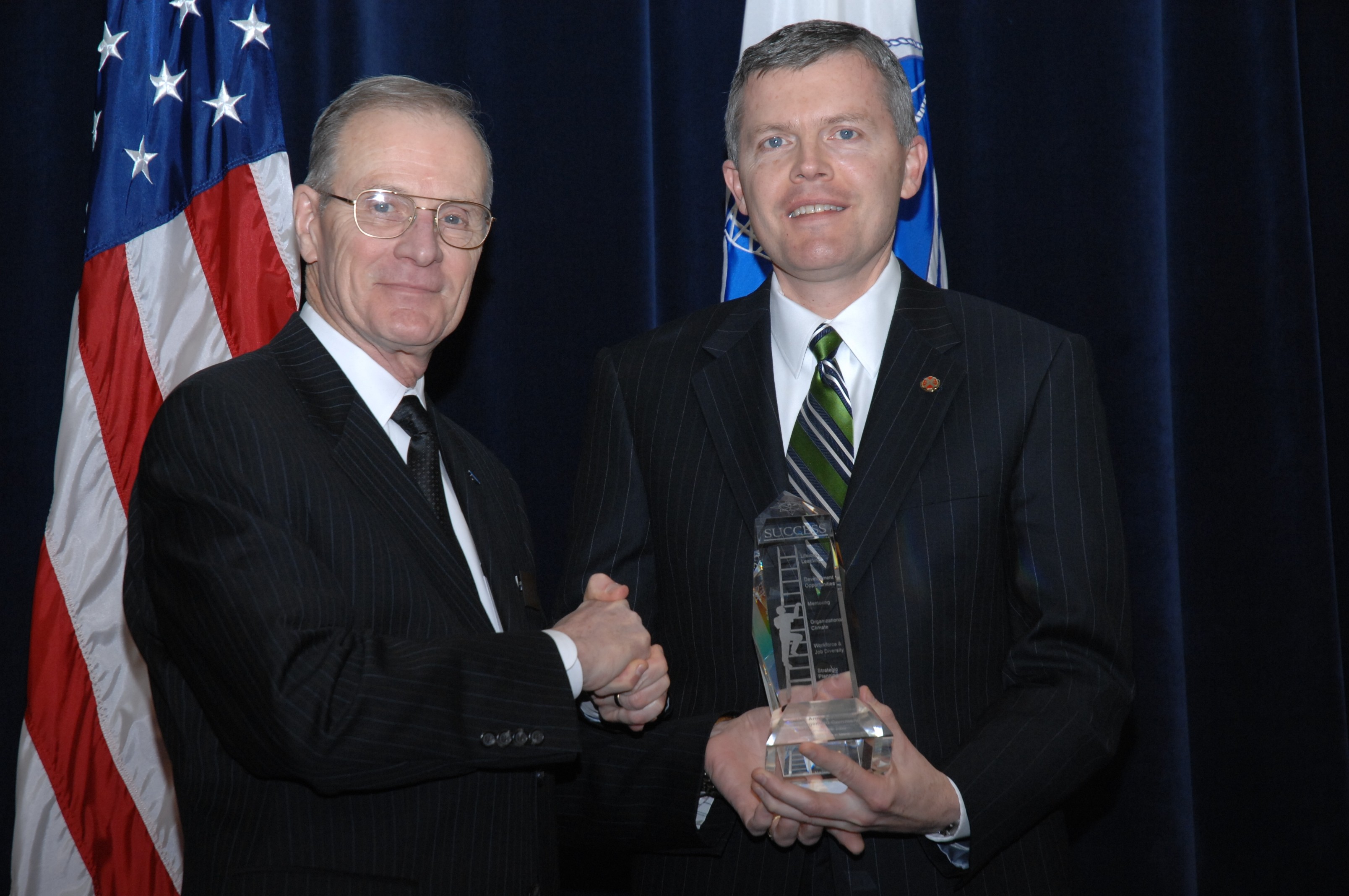FORT BELVOIR (Army News Service, Jan. 30, 2009) - Three Army commands became the first winners of the "Excellence in Education" awards at the Army Management Staff College's Leadership Symposium Jan. 29.
Developed by AMSC and co-sponsored by the Association of the United States Army, the competition recognizes Army organizations that practice the highest standards of excellence in developing and leading the civilian workforce in educational pursuits that support the Army mission and Soldiers in the field.
Army Installation Management Command, Army Aviation and Missile Command and the Army Center for Analysis received trophies and plaques. Thery were presented by retired Lt. Gen. Thomas G. Rhame, AUSA vice president of finance and administration.
First place went to IMCOM which was selected for its Centralized Mentoring, Civilian Executive Development Assignment, Installation Management Institute and Family, Morale, Welfare and Recreation Academy programs.
Dr. Arthur P. McMahan, director of Educational Services at AMSC, said IMCOM's programs serve as models that other organizations have emulated throughout the federal government.
"What we're saying to the Army is that we want you to develop your civilian workforce," McMahan said. "We want a professional, competent workforce, and we want you to model what you're doing so other organizations can see and utilize the model. The awards are to invigorate Army organizations to showcase what they're doing with professional development and lifelong learning."
"This award is a great achievement for me personally and for the command," said Philip F.E. DeMarais, IMCOM chief of workforce development. "The entire IMCOM leadership fully supports developing the workforce and this is a reflection on the entire command and on their dedication to workforce development. It's a great honor."
AMCOM placed second in the competition, and like CAA and IMCOM, was recognized as a model of lifelong learning. AMCOM uses a holistic approach to meeting the sustaining requirements of a professional team of subject-matter experts. The command recruits talent from universities and existing military logisticians to build a professional workforce from an early age.
CAA was recognized for its multifaceted and progressive career development training. The command promotes lifelong learning through cooperative partnerships with outside organizations to provide developmental assignment opportunities to its employees.
Following the awards presentation, Secretary of the Army Pete Geren, who was on hand for the Leadership Symposium, praised the winners for their innovative leader- development programs. He also noted that the award gives "AMSC visibility as a leading institution for leadership and management education."
Geren then spoke briefly with the audience about the newly formed Army Civilian University which will assume oversight of AMSC.
"This new structure will enable us to better integrate competency-based leadership development and education for our civilian workforce," he said. "I'm confident the college will continue to excel under this new framework."
He said the university will enhance central visibility of developmental opportunities throughout the Army's educational system and while the development is only in its early stages, he feels the institution's impact over the long term will be significant for the future Army.
"Some of the Army's expectations for ACU are to develop, train, ready and adapt its civilian leaders into strategic thinkers," he said, "leaders who will operate across the full spectrum of operations in an environment of persistent conflict and persistent engagement." Aca,!f




Social Sharing